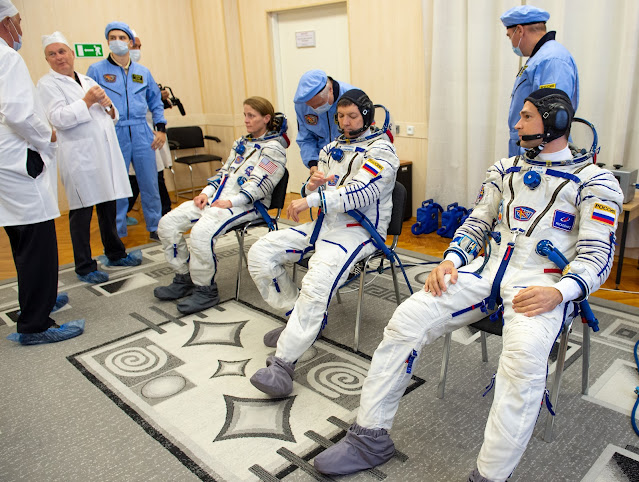The Moon's Shackleton Crater: A New Lunar South Pole Mosaic | NASA
This new mosaic of Shackleton Crater was created with imagery acquired by the Lunar Reconnaissance Orbiter Camera (LROC), which has been operating since 2009, and from ShadowCam, a NASA instrument on board a Korea Aerospace Research Institute (KARI) spacecraft called Danuri, which launched in Aug. 2022. ShadowCam was developed by Malin Space Science Systems and Arizona State University.
Shackleton is an impact crater at the lunar south pole. The peaks along the crater's rim are exposed to almost continual sunlight, while the interior is perpetually in shadow. Measurements by NASA's Lunar Prospector spacecraft showed higher than normal amounts of hydrogen within the crater. This may indicate the presence of water ice. The crater is named after Antarctic explorer Ernest Shackleton.
LROC can capture detailed images of the lunar surface but it has a limited ability to photograph shadowed parts of the Moon that never receive direct sunlight, known as permanently shadowed regions. ShadowCam is 200-times more light-sensitive than LROC and can operate successfully in these extremely low-light conditions, revealing features and terrain details that are not visible to LROC. ShadowCam relies on sunlight reflected off lunar geologic features or the Earth to capture images in the shadows.
ShadowCam’s light sensitivity, however, renders it unable to capture images of parts of the Moon that are directly illuminated, delivering saturated results. With each camera optimized for specific lighting conditions found near the lunar poles, analysts can combine images from both instruments to create a comprehensive visual map of the terrain and geologic features of both the brightest and darkest parts of the Moon. The permanently shadowed areas in this mosaic, such as the interior floor and walls of Shackleton Crater, are visible in such detail because of the imagery from ShadowCam. In contrast, the sunlit areas in this mosaic, like the rim and flanks of the crater, are a product of imagery collected by LROC.
With ShadowCam, NASA can image permanently shadowed regions of the Moon in greater detail than previously possible, giving scientists a much better view of the lunar South Pole region. This area has never been explored by humans and is of great interest for science and exploration because it is thought to contain ice deposits or other frozen volatiles. Scientists believe layers of the ice deposits have existed on the Moon for millions or billions of years, and the ability to study samples could further our understanding of how the Moon and our solar system evolved. The ice deposits could also serve as an important resource for exploration because they are comprised of hydrogen and oxygen that can be used for rocket fuel or life support systems.
A more complete map of the lunar South Pole region area is valuable for future surface exploration endeavors, such as VIPER (Volatiles Investigating Polar Exploration Rover) and Artemis missions, which will return humans to the lunar surface and establish a long-term presence at the Moon.
Credits: Mosaic created by LROC (Lunar Reconnaissance Orbiter) and ShadowCam teams with images provided by NASA/Korea Aerospace Research Institute (KARI)/Arizona State University
Release Date: Sept. 19, 2023

.jpg)
.jpg)

































